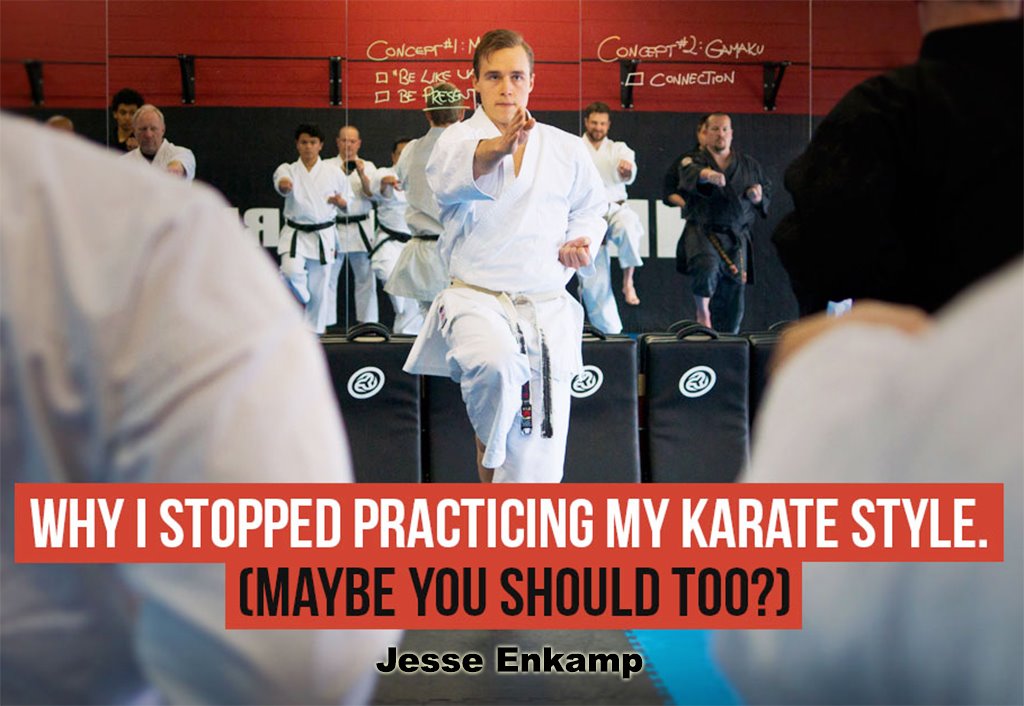
“Why I Stopped Practicing My Karate Style. (Maybe YOU Should Too?)” ~ Jesse Enkamp
.
.
“There is no place in contemporary Karate for different styles. I have heard myself and my colleagues referred to as the ‘Shotokan style’, but I strongly object to this attempt at classification. My belief is that all ‘styles’ should be amalgamated into one, so that Karate may orderly progress into man’s future.” – Gichin Funakoshi (1868-1957) ??
.
In the martial arts, ‘styles’ can become a barrier to progress if they are viewed as something that must always be preserved and can never be deviated from. This preservation prevents the process of ‘Shu-ha-ri’, and diverts us from the quest that the masters themselves were on.
.
The styles that have been handed down to us are invaluable. They form the basis of our karate. We should faithfully copy the teachings of the masters and founders from previous generations, so we gain a good understanding of their own discoveries. However, there will eventually come a point where we should not continue to copy the example of the founders of these styles, and introduce our own expression of the core concepts. Eventually we may even do what they did and go on to formulate and teach our own personal expression of karate. Again contained within the process of ’Shu-ha-ri’.
.
Using ‘style purity’ will stifle growth and is not ‘traditional’ and is bad for karate as a whole. We can see evidence of this in the loss of combative efficiency that ‘form over function’ karate has produced. This doesn’t mean that you go about willfully changing the kata or fundamentals that you have been taught through your original style or system.
.
In karate, we must understand that superficial change and adaptation to technique is always inevitable, perfectly natural and in my opinion, a positive process for self-expression. There is no functional requirement whatsoever to perform something in a certain way simply for the sake of tradition. For karate to be of consistent value, it should be given the freedom to naturally evolve so long as the root principles from which the art is based remain unchanged.
.
The definition of the word tradition is ‘to conform to the beliefs and customs handed down from generation to generation’. Thus, if you view karate as a tradition you will see that the art was originally developed through the melding of native Okinawan arts with non-indigenous fighting systems. The content of teachings were openly modified in order to personally suit the people who were practicing it. Thus adaptation was, is and in my view, should always be central to karate evolution, otherwise we risk almost certain stagnation.
.
“There are no styles of karate-do, just varying interpretations of its principles.” ~ Kenwa Mabuni (1989-1952)
.
With thanks to Jesse Enkamp, Iain Abernethy and Chris Denwood
